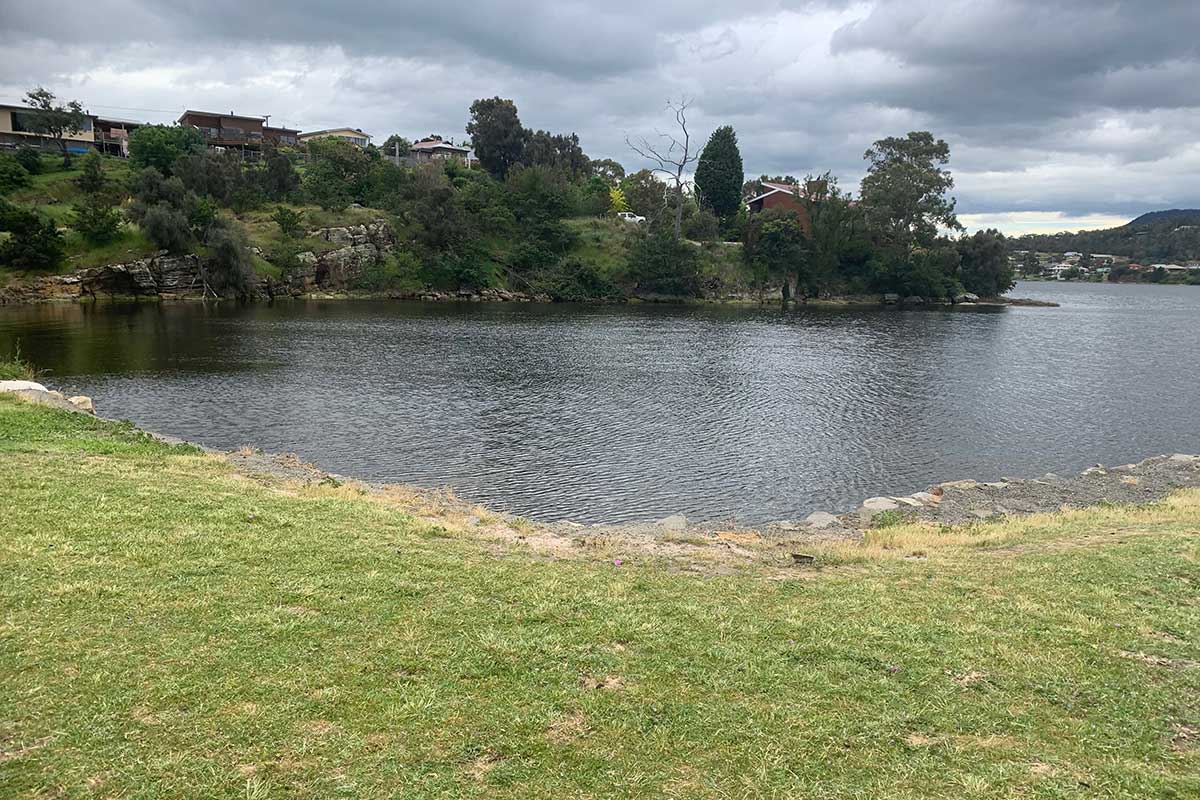Austins Ferry

The suburb of Austins Ferry is named after James Austin (1776–1831), who had been transported to Port Phillip with his cousin John Earl, for stealing honey and bee hives. The pair arrived at Port Phillip in the 56-gun frigate, HMS Calcutta in 1803, among the pioneer settlers under Lieut. Col. Collins, who had been empowered to start a new settlement on Port Phillip Bay. The site was soon abandoned, and the colonists moved to Van Diemens Land. They landed at Sullivans Cove on 21 February 1804, and created the settlement that was to become Hobart.
After serving the five year balance of their sentences, James Austin and John Earl were given small land grants on the western shore of the River Derwent, nine miles from Hobart Town. James built what is today known as Austin's Cottage, as his home; he named the simple stone cottage and farm after Baltonsborough, the village of his birth in Somerset, England.

In 1818 James and John established a ferry service across the river and later a punt which proved very conveniently located for vehicular traffic travelling between Hobart and regions to the north, and they became very wealthy. In 1821 the visiting Governor Lachlan Macquarie called on Austin and the small settlement that began to grow around the ferry landing, renaming it the village Roseneat. It has since reverted to its original name. James Austin's humble cottage still stands in Austins Ferry Road and is preserved as a museum and tourist attraction. The opening hours for the cottage are limited to Sundays between 1pm and 4pm.

Beedhams Bay, Austins Ferry
After Macquarie's visit the ferry's operation on the western side of the river, initially run by Austin, was known as the Roseneath Ferry, and that from Old Beach, initially run by Earle, as Compton ferry. Inns has been built at both ferry landings by 1821. In 1828, Earl retired due to ill health, the Compton ferry service was taken over by Charles Goodridge. Two years later, Goodridge took over the other ferry from Austin, whose health was also failing.
In 1825, James Austin's nephews, Solomon and Josiah, had emigrated to Van Diemen's Land. In 1831 Josiah went back to their hometown of Baltonsborough, Somerset, England and collected his parents; his other uncles William, James, and Thomas; and his sister Anna, later Mrs J. G. Mack. Their convict pioneer uncle died before they arrived in Hobart, but all benefited by his will.
The Austin parents and William ultimately returned to England, where the eldest son, John, had remained, but James and Thomas stayed in Tasmania. James took over the inn at Compton Ferry, and bought a stage coach from Solomon and Josiah, who ran the first New Norfolk service. Thomas went to the Ouse, where Solomon and Josiah had most of their estimated 10,000 acres (4047 ha). Early in 1837, Thomas and James moved to Victoria, where they established themselves as successful farmers and business men.
It is believed in 1850 the Mollineaux family took over the Compton Ferry in 1850. Branches of the family were well known river people, transporting timber in the Derwent and Jordan River areas. The family members who took over the ferry had land at Old Beach and it was Elizabeth Mollineaux who became the first ferryman to row passenger across the river. John Mollineaux, Eliza's grandson, was the last of the family to be a ferryman, and it was with his death in 1952, that a ferry service between Austins Ferry and Old Beach finally ceased.
John Mollineaux had been a ferryman for 52 years and in that time had rowed some 125,000 kilometres. He rowed across the river in all weathers and as often as the need was there. On occasions he took groups on his steam launch. He travelled as far upriver as Sorell Creek to take groups for picnics and as far down river as the Hobart wharves to collect goods from town. In 1921 he made his home in Austin's Ferry Road, directly opposite the home of the first ferryman, James Austin.

View from the golf course, Poimena Reserve
Poimena Reserve
Sited on top of a small hill in Austins Ferry adjacent to Roseneath Rivulet, Poimena Reserve offers commanding views of the Derwent River to the east and kunanyi / Mount Wellington to the West. The reserve offers a diverse walking experience through a mix of native white gum, peppermint and blue gum woodland and managed parkland. There are BBQ facilities here and the reserve is home to southern Tasmania’s only disc golf course.
The reserve is designated Land for Wildlife and supports a range of fauna including native marsupials such as bandicoots as well as over 72 native bird species. A number of rare beetles and herbaceous plants also inhabit the reserve. For this reason dogs are prohibited in the lower half of the reserve and must be kept on lead and on the desiganated trails in the upper half of the reserve.

Roseneath Rivulet, Poimena Reserve
Roseneath Rivulet
It was in June 1821 that he recorded the following in his journal: ”Previous to leaving Austin’s Mrs. Macquarie and myself (after obtaining the sanction of Austin and his partner Earl) named their place Roseneath on account of the great beauty and very picturesque scenery of this place and its similarity to the place of the same name in Scotland.” The name of the locality was then given to the Rivulet that entered the river nearby. Roseneath Rivulet enters the River Derwent at Shoobridge Park, Austins Ferry.
